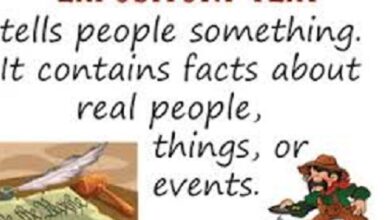Characteristics of oral communication and Elements
Oral communication
The ability to communicate is perhaps the main quality that differentiates us from the rest of the animals on the planet. In this article we will provide you the information about Characteristics of oral communication and Elements.
Although other species, from bees to great apes, have diverse means of communication, none come close to the extraordinary complexity of human communication.
Oral communication is that which is established between two or more people through the spoken word, either in person or through devices such as telephones or computers.
The basis of communication is dialogue, so there must always be a sender and a receiver.
Elements of oral communication
In oral communication the elements that must be present are the following:
-
1-Transmitter
The sender is the person, or group of people, who emits the message.
-
2-Receiver
He is the one to whom the message is intended and receives it.
-
3-Message
The message is the content that you want to convey, the information or idea, thought or emotion.
-
4-Channel
The channel is the voice and the medium through which it is transported, the air. This circumstance may vary if it is not a face-to-face communication (such as video calls).
-
5-Code
It is made up of the set of symbols and elements that we use to communicate, and that in the case of oral communication, it would be mainly verbal language, supported by gestural language and other forms of visual expression.
The code also refers to the language in which it is spoken.
-
6-Context
It is the physical and social space and the time in which the communication takes place (family, religious or work context, for example).
-
7-Feedback
It is the information that returns from the receiver to the sender and allows him to know if the message was understood. It is also known as feedback .
Feedback implies that the receiver becomes the sender and the sender the receiver.
Characteristics of oral communication
In oral communication, the voice plays a fundamental role, and this in turn involves the participation of the speech apparatus and hearing.
-
1-Ephemeral character
In principle, orality is ephemeral, that is, once the message is broadcast, it disappears, unless it is being recorded, or has been previously recorded. A common example today would be communications with audio messages by WhatsApp.
-
2-Use of gestures
Oral communication can rely on the sender’s gestural language to convey the message; and sometimes, in audiovisual material to complement the information.
By having other forms of communication, such as gestures, it may seem incomplete or disjointed to the listener without observing the speaker (as in recordings of lectures or monologues).
-
3-It is spontaneous and immediate
It can be spontaneous, subject to errors and rectifications, and rely on idioms and misunderstandings between the participants. It is immediate because the mental process used to speak is faster.
This often implies that the message is not grammatically coherent: “the windows are closed.”
-
4-Other features
It can be in person or remotely (via telephones or computers), immediate or delayed (when it comes to recordings or videos).
It can also be unidirectional (a class, a conference) or multidirectional, as in dialogues, when the role of sender and receiver are exchanged.


